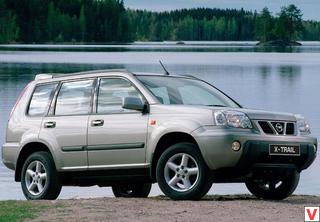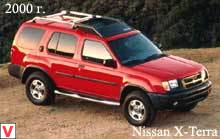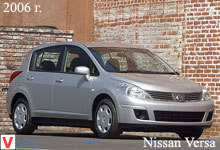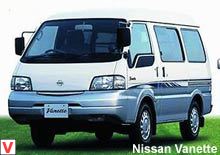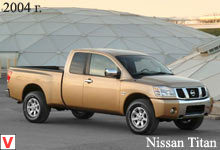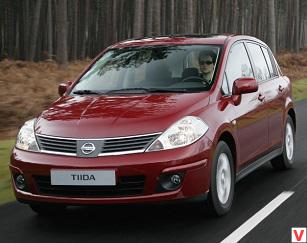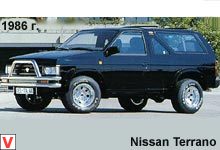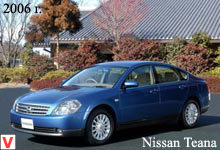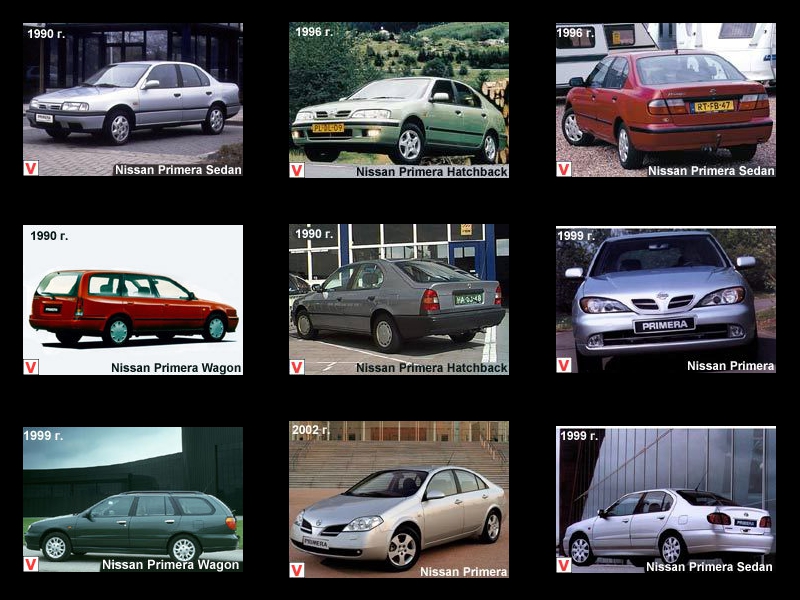
NISSAN Primera (Altima) is a family of class D cars with front-wheel drive and all wheel drive. Available with sedan, hatchback and wagon. The first generation Nissan Primera was first introduced in February 1990. In the autumn of 1990 appeared all-wheel drive modification.
The first-generation Primera was produced in the P10 body - a 4-door sedan and a 5-door hatchback, while the station wagons had a W10 body index and had almost nothing to do with a sedan and hatchback. Yes, they have the same interior, the same engines are used, but they are completely different cars. In addition, the W10 was produced (from 07.90 to 01.98), one might say, in its historic homeland in Japan, and the P10 in the UK, which means a lot: technology, materials, personnel ... Primera cars started 90 x is characterized by a calm appearance. Despite external similarity, the versatile person essentially differs from a sedan with a hatchback on a design.

The main difference is the three-link front suspension, providing P10 legendary stability and control. The wagon is used McPherson and dependent beam, which are more reliable and durable, so that the wagon rear suspension is almost not amenable to wear. However, from this workhorse (wagon) rulitsya noticeably worse than the Primera in sedan and hatchback, a feature of which is a very clear steering. Multi-link suspension is tough here, but moderately comfortable. Due to its complex construction, in sharp turns Primera does not collapse to one side, and the bumps on the road pass with a much smaller hum in the cabin than any of its competitors.
A small buzz is present, but there is no separation from the pavement, yaw and other "pleasures". It is precisely clear and predictable behavior on the road that many owners call the first advantage of the car. The interior of the car without unnecessary frills, everything is quite simple, but nevertheless very comfortable and functional. The trim levels in P10 were as follows: LX, SLX, GT. The GT version looks different with other bumpers, spoilers, original discs, door sills. In the cabin - seats with more developed lateral support. Original colors, which are used only on the GT - this is not velor, but a special black and black and gray fabric.
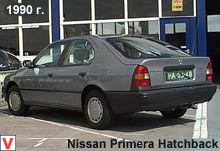
Landing a car a little lower. The steering column is adjustable in all versions. The steering wheel is comfortable, well “lies” in the hands - due to the material used, sweaty hands do not slip.
The LX version is equipped with a two-spoke steering wheel, unlike the more expensive versions with a three-spoke steering wheel. She has a cloth interior, and there is not even a tachometer. The driver's seat is equipped with a lumbar support (3 positions), the pillow has 2 adjustments - in height and angle of inclination, the back - of the angle of inclination, but the headrest is unregulated in inclination. The instrument panel of the car with smooth transitions is quite simple in appearance, but nevertheless it is functional and ergonomic. The instrument cluster contains all the necessary information.
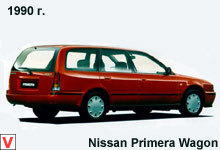
A very useful thing is a warning lamp informing about unlocked doors and a sound alarm system about headlights and side lights not turned off. There are also knobs for setting the clock and resetting the daily run. When moving, all buttons and controls are accessible only by the movement of a hand (no need to bend over). The gas tank hatch is opened remotely from inside the cabin with a special lever mounted on the floor near the driver’s seat. Ventilation duct control, heating and air conditioning of the cabin is equipped with electric drives and is carried out using the buttons, there is also a fan mode switch.
In the lower part of the console there is a box-container (there can be installed a cassette holder, just a trifle container or a container with a spring-loaded lid (the latter is the most common)). At the bottom - the cigarette lighter and ashtray. The central lock and electric powered windows are equipped with many cars from the beginning of production. In the versatile version, the spacious luggage compartment allows you to place a large amount of luggage and, if necessary, spend the night with relative comfort.
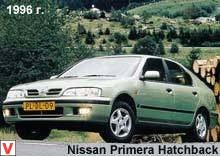
I put in the trunk covers from prying eyes a soft sliding shelf, having two mounting positions in the luggage compartment - depending on the amount of tilt of the rear seat backs. For the car offered several engines. Gasoline GA16DS - volume of 1.6 hp 1.6 (carburetor), and in 93 it was replaced by the GA16DE - the same 1.6, but with a distributed injection of 100 hp. SR20DI - monoinjector 2.0 with 115 hp capacity, from 93rd SR20DE –125 hp, subsequently 135 hp The power of 2-liter is indicated as basic, and the real one is very approximate and unstable, since when piercing the VIN-s of cars of different years there is often mention of reduced engine power.
The diesel LD20 (75 hp) was produced until April 1996. The engines are sufficiently reliable and, with proper maintenance and timely service, they are able to “go out” to a major overhaul of up to 200-300 thousand km. Carburetor versions of engines often experience jerks when working due to a tendency to misalign and uncoordinated work with a catalyst. Gearboxes used 5-speed manual and 4-speed automatic. The manual transmission Primera first year has a negative reputation, because over time, the fifth-gear synchromesh get loose. As for the “automaton”, it does not cause difficulties in operation. The brakes are quite clear and informative.

On all cars, front disc brakes were installed, rear disc brakes (SR20Di, SR20DE and part of GA16DE, CD20) and drum type (GA16DS and part of GA16DE, CD20). Most cars (except GA16DS) are equipped with ABS. In mid-1996, a new series Primera appears on the conveyor, with the index P11E. This model was developed exclusively for the European market (hence the letter E).
It is noteworthy that in the UK now all the body, including wagon WP11E. According to the designers, The car has been substantially redesigned. In the new model, more than 600 innovations have been applied, although this concerns mainly trifles. The rear part of the suspension P11 has changed, now it is made, as in W10 - a beam with the Scott-Russell mechanism, and only the lower lever (or rather, one of its silent blocks) has changed in front. The handling of the car, especially its cornering behavior, has become exceptional. The car developers managed to bring the car's axial weight to the ideal one.
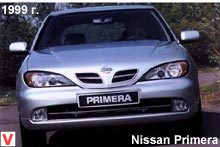
However, in the new P11, the new rear suspension often triggers a breakdown than in the P10. Configuration options, remained the same as that of its predecessor - SLX and GT. There were also GX (the poorest, replacing the LX) and SE (the richest: 4 pillows, leather, sunroof, air conditioning, music, etc.). The remaining names are secondary, they do not carry essential information and serve purely marketing purposes. The interior is probably half of the promised 600 changes - in the upholstery of doors, plastic dashboard. Now the interior has become two-color, with a dark top and a light lower part. The seats also increased in size, their backs became a little higher.
Sometimes there is leather trim. Engines were updated, but remained the same. Some have changed their characteristics. In the spring of 1997, the GT version (sedan) came out with a 2-liter 16-valve engine producing 150 hp. Externally redesigned engine distinguish the red head. Changes in the braking system affected, in particular, the electronic brake-force distribution system, which controls the relationship between the front and rear discs, as well as the vacuum brake booster, brake master cylinder and ABS. In September 1999, a new generation of Nissan Primera models with the body index P11-144 came into production.

Nissan Primera production is now focused on Nissan's flagship plant in Sunderland, UK. The appearance of the car and the interior, made in the sports-representative style, are developed in the European technological center of the company Nissan under the guidance of the English designer Dale Gotsel. The hood lines are completely changed: the protruding chrome-plated edges of the grille smoothly flow into the hood with a modified, clear profile.
Its aggressive style is also transmitted to the bumper with air intakes and widely placed fog lamps. The lowered bumper looks like a part of the body, its lower part improves the erodynamic characteristics of the car and smoothly passes into the sills, visually reducing its height, so the silhouette of the car has become more squat. The headlamps are equipped with xenon lamps that give two times more light than standard halogen lamps. The sporty style of the front part echoes the raised edge of the rear spoiler and soft outlines of the bumper, which looks like a single whole.
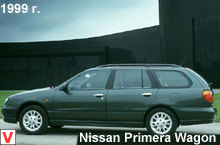
Elegance is underlined by the trunk line and convex "three-dimensional" rear lights with black and red lenses hidden by smoky plastic. The elegance, sportiness and manufacturability of the appearance of Primera finds its continuation in the interior of the car. The front panel is made in two colors, with a dark top and a light bottom.
Modified front seats have new upholstery materials, their wider and higher cushions highlight the luxury and sporty style of the new car. The car is offered with four trim levels: Comfort, Sport, Lux, Elegance (the last - the most fancy). Four different types of fabric are used for the interior, and it is also possible to trim the most complete models with leather. The gearshift handle of the new form is made of aluminum or wooden in the Sport and Elegance trim levels.
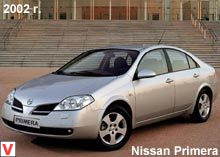
It is also possible to trim the steering wheel with leather and wood. Each equipment can be equipped with any of the engines: gasoline with a volume of 2.0, 1.8 and 1.6 liters or a two-liter turbodiesel. The new 1.8-liter gasoline engine, which received the QG18 index, exceeds the European requirements for Euro-4, which will come into effect in 2005. It was based on the SR18, which is not well-known in the Japanese market, with variable gas distribution phases. The two-liter version received as an option variators. A new manual gearbox is installed on all the listed options, and with a two-liter petrol engine, the CVT or CVT M-6 can be equipped with a CVT.
With any engine and trim level the car is offered in one of three bodies: a sedan, a hatchback and a station wagon. Security is one of the main areas of improvement for the new generation of Primera. The number of new technologies, thanks to which Primera has become a leader in the field of safety, includes the first in this class mechanical brake pressure regulator, new headlights, new larger side airbags and the ISOFIX child seat anchorage system.
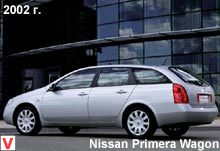
The Brake Assist system is the first of its kind installed on a vehicle from the D segment. Like the analogous system on luxury cars, it helps the driver of any level of training to slow down as efficiently as possible using ABS. Together with the four-channel ABS and electronic brake-force distribution systems and Brake Assist, the new Example is equipped with ventilated brake discs with a diameter of 280 mm, which were previously only equipped with the GT version. The brake force distribution system clearly controls the balance between the front and rear brakes.
These innovations, together with improvements in the master brake cylinder and brake servo, have made the brake system examples more powerful and manageable. The climate control system is designed to be activated with one touch. The driver only chooses the temperature - and the climate control system itself regulates the microclimate in the cabin, taking into account changes in the outdoor temperature and the degree of heating of the cabin by sunlight. All, what the driver needs to do is to correctly direct the streams of air entering the cabin. No need to adjust the fan speed or temperature.
The new generation Nissan Primera 2002 - the sedan and wagon Primera - produced from mid-December 2001 at the famous factory Nissan Motor Manufacturing (UK) Ltd. in Sunderland, UK. In the early summer of 2002, the production of a 5-door hatchback, created specifically for Europe, began. The high-tech Primera has retained all the forms of the concept shown in Paris in 2000. Its distinctive “monoform” represents bold changes in the style of the three-volume body and sets a new standard in this class. The new generation of the Nissan Primera model can perhaps be called the most revolutionary new product in the middle class in the history of the company.
Creating a unique personal style was the main task when, in 1997, work began on the third generation of Primera. Stefan Schwartz, Chief Designer, Nissan Design Europe, the person under whose guidance the exterior of the new Primera was created, describes the design of the car as best representing the change of positions in concepts and form expression. “Our initial idea was the desire to move away from the stereotypes of creating a concept sedan.
The design of the sedan is traditionally very conservative, with a strict separation of the engine compartment, cabin and luggage compartment. In order to ensure greater spaciousness and convenience of the cabin, we approached the exterior design, starting from the inside of the cabin, i.e. started developing forms from the inside. Our “monoform” silhouette combines the functionality of a roomy cabin and a unique profile, easily recognizable from a distance, ”he says.
The modern “monoform” style of the new sedan Primera combines the engine compartment, the passenger compartment and the luggage compartment into an elegant single line, due to which the car looks dynamic, leaving a feeling of simplicity of the lines. The sloping roof, clear edges on the glass, the absence of traditional bumpers, huge headlights and taillights are striking. Installed, instead of the standard headlights, xenon headlights of the new Primera give the advantage of a more natural, close to the daylight, lighting.
They are twice as efficient as halogen lamps and provide better visibility on the road during night trips. The inlets located under the flying wings of the grille, the hood and the windshield look one piece. The feeling that the car was created from a monolithic mass, further enhanced by the additionally “softened” line of the bumper, which is connected to the wings by broken lines.
Such an uncompromising approach to the creation of an original design led to the emergence of a new production technology. When creating a wider wheelbase (2680 mm), necessary to give the Primera a greater dynamics, a new method of pressing was developed, which allows in the process to bend the flanges of the wings, previously welded by spot welding to the plane of the wing. The tailgate, which was difficult to manufacture, also demanded the development of an unconventional body production technology.
Sports and elegant wagon differs broken lines, smoothly turning into a sloping rear door. The dimensions of the body, compared with the previous generation, have increased significantly (4565x1760x1480 mm), and, accordingly, the cabin space has expanded. The curved roofline of the new Primera and the instrument panel pushed forward create a feeling of free space inside the car. Spacious areas around the elbows in the front seats along with the shape of the doors, embedded inside, completely eliminate the feeling of tightness for people with a very tight physique.
On the other hand, the upper edge of the door is issued inside the cabin, so there is a proper degree of compactness inherent in sports sedans. The luggage compartment of the Primera sedan is 450 liters (VDA). On the station wagon luggage capacity is 465 liters, which can be increased by folding the rear seatbacks. The backrest can also be folded in a 60/40 ratio. Under the removable upholstery of the boot floor there is a waterproof compartment for storing various items of 40 liters; Also, the luggage compartment is equipped with a vertical net-holder with 4 attachment points, a folding hook for bags and a large number of eyelets for securing cargo.
The design of the seats has been redesigned in order to provide better visibility in the cabin and create a feeling of greater space, as well as improve the fit and exit of the car. The headrests of the front seats are made as narrow as possible to increase the view of the passengers sitting in the rear seats. The cushions and high backrests provide convenience and comfort. Adjustable driver and front passenger seats provide optimal lumbar support, allowing you to choose the most comfortable posture. The design of the rear seats is modified in such a way as to provide better support for the upper back.
Higher seating positions also provide better visibility. Interior design is fully consistent with the avant-garde appearance of the car with its calmness and smoothness, seamlessly merged with the technology of broken lines. The curved shape of the cabin is a key point of the design; it allows the toolbar and information system to be pushed farther to the center than usual.
For the driver, this is more convenient, since now less effort is needed to refocus the gaze between the road, the dashboard and the monitor. The Primera driver’s field of view between the road and the instruments is 25 degrees, as opposed to 35 degrees with the traditional layout. Remote control systems of the car also falls into the field of peripheral vision. Thus, the Primera interior implies an intuitive, more relaxed and harmonious control, provided by a thoughtful to the smallest arrangement of devices that combine high quality with the latest technology.
Under the instrument panel, located on the center console, there is a unique control center specially designed for convenient use and to prevent fatigue of the driver’s hand. This arrangement was found as a result of numerous studies to improve the interaction between man and car through the rational use of technology and developments in ergonomics. Climate, navigation and audio systems, as well as other devices on the machine, are controlled by the latest interface with a joystick and six multifunction keys, which made it possible to get rid of many traditional buttons and switches.
The size of each of them has increased, so that they work correctly even when you click blindly, since all control buttons are conveniently located along the line of natural movement of the hand. All information on managing these systems is projected onto a large color TFT monitor. When you turn on the reverse gear on the TFT monitor, the location of the objects surrounding the car, taken on the rear view camera, is located above the rear license plate and is activated when the reverse gear is engaged.
The newest unique for the D segment system of intelligent laser cruise control (Adaptive Cruise Control (ICC)) was included in the package of the car for the first time. It uses the infrared laser sensor to determine the distance to the vehicle in front and sets a safe driving speed behind it. engine and brake system.
The new DVD terminal of the navigation system has replaced the traditional CD, now the driver’s map of the whole Europe can be available on one disk. Primera is equipped with a wiper with a rain sensor. When the switch is in the “auto” position, the wiper is activated asOnly a rain sensor will detect droplets of moisture on the surface of the windshield.
In addition, the system independently controls the change in the speed of movement of the brushes and the duration of the operating cycle. There are three levels of basic configuration - Comfort, Elegance and Techno. The range of engines almost did not change, a new 2.0-liter gasoline engine was added to the 1.6-liter and 1.8-liter modernized engines, and the latest development of the Nissan was a 2.2-liter turbo diesel engine with direct injection systems and “Common Rail », Providing good power characteristics and lower fuel consumption. The new Primera is equipped with the familiar 1.6-liter QG16 engine, which now develops 80 kW (109 hp) at 6,000 rpm.
and torque 144 Nm at 4000 rpm. The electronically controlled throttle valve provides smooth transmission of increased torque achieved through a variable camshaft timing system. The aluminum collector replaced the traditional cast iron one, which, together with an increase in the length of the exhaust manifold, resulted in an increase in torque for greater "elasticity" of movement. The more powerful 1.8-liter QG Series engine also has a dual aluminum exhaust manifold and variable valve timing system, which increases torque and improves acceleration, while the flywheel and low noise circuit reduce noise.
This engine develops a power of 85 kW (116 hp) at 5,600 rpm and a torque of 163 Nm at 4,000 rpm. New QR20 Engine Volume 2, 0 l has a cylinder block of the frame (ladder) type of increased rigidity and a compact system of balancing mechanism to ensure excellent smoothness and quietness during operation. The use of lighter parts, a low-noise chain and a plastic valve cover allows this engine to get as close as possible to the characteristics of a 6-cylinder engine. Its maximum power is 103 kW (140 hp) at 6000 r / min, and torque - 192 Nm at 4000 r / min.
The YD22 16-valve, 2.2-liter turbo diesel engine with two overhead camshafts and “Common Rail” technology is similar to the engine installed on the X-Trail car recently launched into serial production. With an additionally installed turbocharger and an additionally variable injection duration, it reaches a power of 93 kW (126 hp) at 4000 rpm and a torque of 280 Nm at 2000 rpm. Engines with a volume of up to 2.0 liters. standardly equipped with a 5-speed manual gearbox, and for a 1.8-liter engine, a 4-speed automatic transmission is possible. Both new engines are offered with a 6-speed manual gearbox, and for a 2.0 liter gasoline engine.
Additionally, it is possible to install the Hypertronic CVT-M6 variator with manual shift. Significant improvements in the brake system of the new Primera, allow this car to also occupy the leading position of the D segment and in terms of braking efficiency. The new Primera is the first Nissan car with the advantages of the new Bosch ABS 8 system, which is more efficient and also lighter and more compact than its predecessors.
The combination with the Nissan Brake Assist system provides effective braking even with little effort by sharply pressing the brake pedal, and the electronic brake-force distribution (EBD) system allows you to apply optimal braking force to the rear wheels at all levels of congestion. Braking performance is also guaranteed by using larger diameter brake discs and a 10-inch single-stage brake booster. In addition to the ABS system, the system of exchange rate stability (ESP) provides additional control over the behavior of the car in motion.
ESP not only significantly reduces oversteer or understeer, but it is also used to maintain stability under extreme conditions. This system, using various sensors that monitor the behavior of the car, automatically controls the engine and distributes braking forces to each wheel on slippery road surfaces or in emergency situations. Combining the best features of the McPherson suspension and the double-wishbone system, the multi-link front suspension uses a specially insulated subframe that provides smooth ride and comfort while reducing noise and vibration.
The new Primera has a shock-absorbing, high-strength body structure designed to create a safe area around passengers, the hallmark of which is reinforced sills, front spars and pillars, as well as deformable zones in the front and back. The central pillars, reinforced sills and side members have been designed to provide extra strength to the cabin. Amplifiers in the doors, as well as a special design of the door that prevents its deformation inside the cabin, distribute the impact energy to the load-bearing elements of the body. When used with seat belts, the new Primera airbags help reduce the likelihood of injury to the driver and front passenger in a frontal collision.
A seat belt pre-tensioning system with pressure limiters is used to reinforce the new car's security package. This system is recognized as an effective means for absorbing the kinetic energy accompanying a frontal collision. The car is also equipped with side airbags, which are designed to protect the driver’s and front passenger’s thorax in the event of a side impact, while Primera curtain airbags protect the heads of passengers in the front and rear seats.
The shutters are designed in such a way that they remain open for longer to provide greater protection. Designed to prevent injury to the cervical vertebrae in case of accidents at low speeds (the most typical injury), the Nissan active head restraint system uses the pressure force of the body on the back of the seat at the moment of impact, which causes the head restraint to move up and forward, preventing the injury-causing head tilting backwards. Fully mechanical, the head restraints then automatically return to their original position. In the event of a serious blow, the new Primera can reduce the risk of injury to the driver’s feet with the retractable brake pedal.
When the car’s front body panels move backward, their movement initiates a mechanism that pulls the pedal forward from the driver to minimize the risk of injury to the lower legs. When creating a car, much attention was paid to the safety of pedestrians. The soft front bumper filler serves to soften the blow and reduce the risk of injury when hitting a person, and the lower part of the front wings is made more rigid to reduce the risk of injury to the lower leg. All this allows you to distribute the blow into two zones instead of one, helping to avoid knee injuries in case of accidents at low speeds, which usually occur when the knees take over the entire speed of the car.
So, What is the value of the Nissan Primera on the market? Of course, for a reasonable initial investment. For excellent ergonomics and excellent road holding. Among the versions you can find instances that could satisfy both the inveterate driver and the calm summer resident.
Major expensive repairs are the result of neglect of the condition of the car. Therefore, choosing Primera, treat the recommendations of the service very seriously. Believe me, the car will appreciate it. Take the recommendations of the service very seriously.
Believe me, the car will appreciate it. Take the recommendations of the service very seriously.
